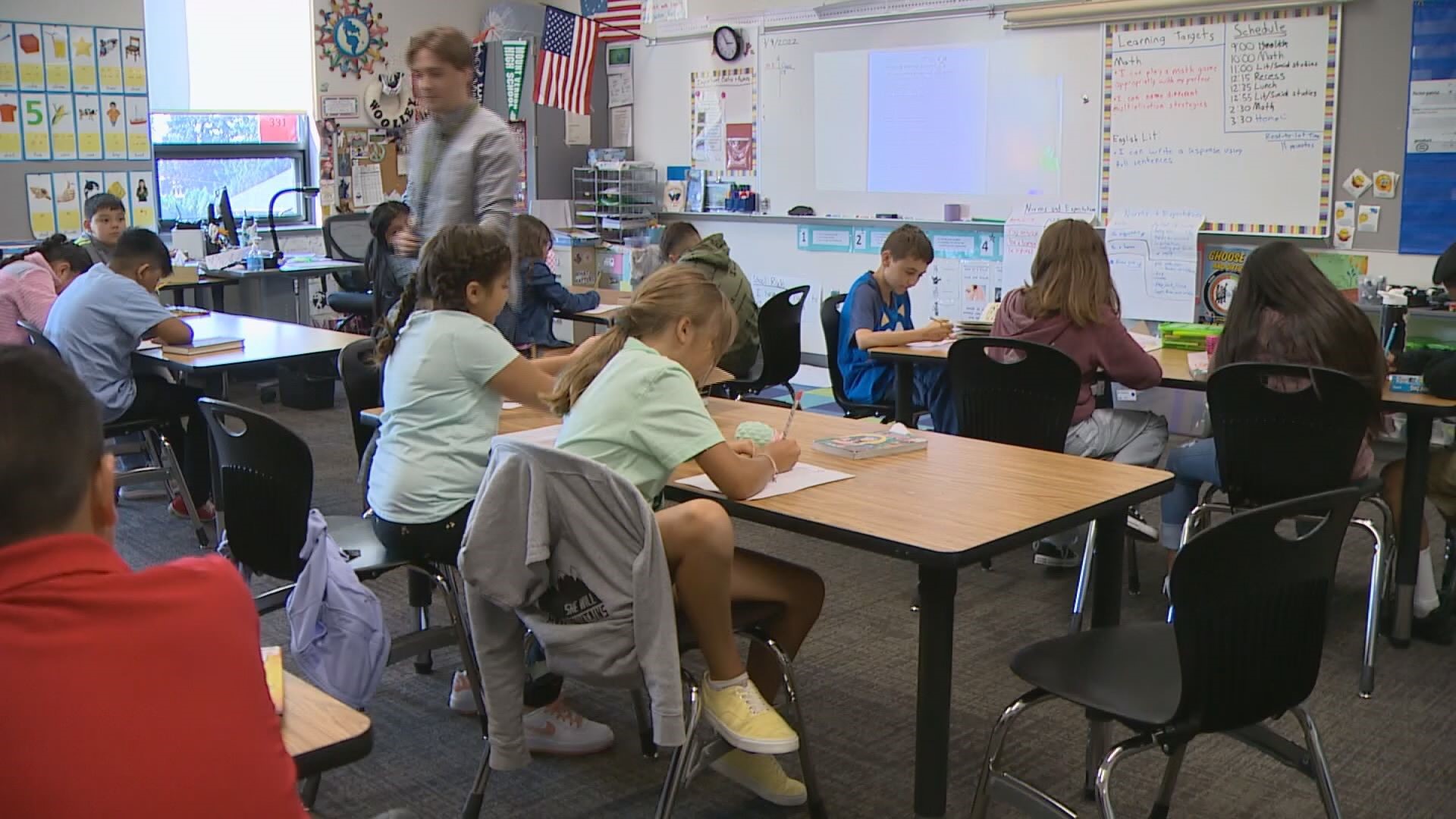PORTLAND, Oregon — Oregon schools are changing the way they teach students to read. Earlier this summer, the state legislature passed a bill which provides $120 million over two years to school districts that use phonics-based reading or other research-aligned reading curriculums.
Phonics curriculum teaches students to read by learning the sounds of letters and syllables. Students then learn syllable patterns and decipher how letters sound when paired together. This is in contrast to a whole language reading approach, which teaches students to learn words as a whole, instead of taking them apart syllable by syllable.
Earlier this summer, House Bill 3198 went into effect, granting more than $100 million to school districts across Oregon who use research-aligned reading and writing practices. The money can be used in several ways: to adopt phonics, phonemic awareness, vocabulary and fluency-based curriculum. It can also be used to provide phonics teacher education, add summer programs or tutor children. The bill allows educators to teach students reading comprehension and vocabulary, at an individual level, through research aligned strategies.
The bill states that this science of reading based approach could have major benefits for economically disadvantaged students, children who have disabilities and many more.
"We anticipate that this will have a big impact for how students learn to read and write," said Jennifer Patterson, an assistant superintendent with the Oregon Department of Education.
For decades, Oregon school districts have been able to choose how they teach young students to read. Across the state, children have been taught different ways to read. Some learned through phonics, others through 'whole-language,'
"Reading is a very complex skill that children just don't pick up naturally by osmosis," said Dana Hepper, the policy director at the Children’s Institute.
Oregon fourth graders have scored below nationwide averages every year data has been released since 2005, according to the National Assessment of Educational Progress. In 2022, only five states and Washington, D.C. had lower reading scores.
"We know that when everyone is focused on the same core elements and instruction for reading and writing, that all people benefit," Patterson said.
Mississippi was one of the first states to fully embrace phonics in 2013. That year, Mississippi ranked 49th in the country in reading. Over the past decade, Mississippi students' scores have steadily risen. They are now above average in reading scores.
Meanwhile, the Oregon Department of Education expects the grant funding to incentivize the state's 197 school districts to embrace research aligned curriculum, like phonics, alongside curriculum that is already in use.
Over the past few years, more school districts have started to use phonics. The North Clackamas School District started using phonics last year, Beaverton instituted the curriculum two years ago. But Beaverton School District officials said the funding could still be beneficial.
"For us one of the big pieces of the bill is professional development for teachers around phonics and phonemic awareness," said Joshua Fritts, an administrator with the Beaverton School District.
But teacher education is intensive for the phonics curriculum. They undergo phonics training on a learning platform called 'LETRS.' Training takes two years and 160 hours to complete.
"We know that the arc of change, and the arc of implementation around the really significant literacy plan does take time," Patterson said.
Oregon’s Early Literacy Framework handbook said phonics will be beneficial because students will learn to accurately decode words, leading to easier memorization.
"To access this funding, schools need to have research aligned literacy practices," Rep. Jason Kropf said.
Kropf expects phonics curriculum will eventually lead to higher high school graduation rates.
Besides $120 million for school districts, $10 million will also be allocated to organizations that help students in K-5 learn to read, and to literacy programs for children from 0-5 years old.
"This is the beginning of a long-term commitment to making sure that we are teaching our young learners appropriately," Kropf said.
Legislation does not force school districts to use phonics curriculum. Kropf hopes that in 2025, the state legislature will allocate more money to schools to continue embracing phonics.

